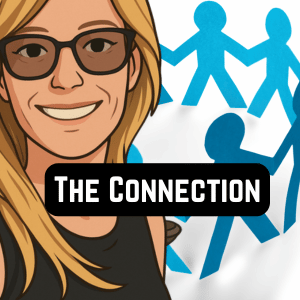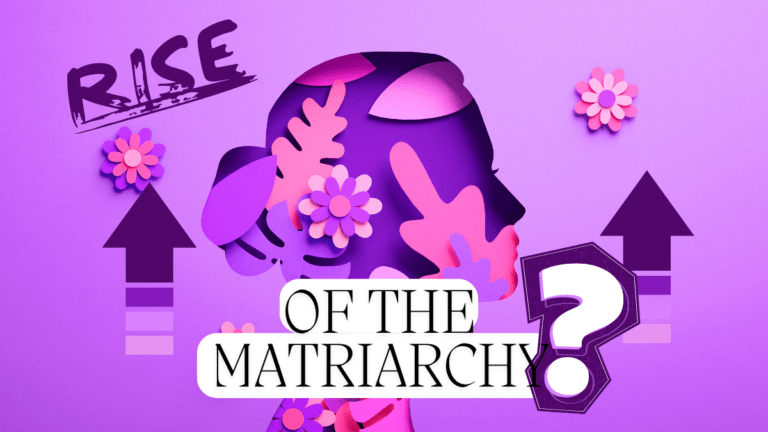The Hidden Connection Between Narcissistic Abuse and Patriarchy
Are you seeking True Partnership and wondering why it’s so hard to find?
Follow our work beyond the podcast: We publish essays and insights on Medium through our Moving Forward with Hope publication, and you can also find additional content and community updates on our Substack. Join us there to go deeper, connect with others, and support the movement.
The following is a transcript from the Narcissistic Abuse Recovery Podcast
Podcast: Narcissistic Abuse Recovery Podcast
Host: Lynn Nichols
Episode 96 Show Notes: The Hidden Connection Between Narcissistic Abuse and Patriarchy: A Groundbreaking Episode
Have you ever wondered why toxic relationship patterns keep repeating, no matter how hard you try to “fix” things? What if I told you the problem isn’t you, your partner, or even individual men – but an invisible system so pervasive that most people never see it operating? In this riveting episode, we uncover the shocking connection between narcissistic abuse and patriarchy that will fundamentally change how you understand relationships, power, and social change. This isn’t another male-bashing session – it’s a revolutionary approach to healing that liberates everyone from destructive patterns while holding people accountable for their actions.
What You’ll Discover:
- The devastating truth about why individual relationship “fixes” always fail
- Shocking research findings connecting narcissistic abuse patterns to patriarchal systems
- The exact same tactics both narcissists and patriarchy use: gaslighting, isolation, trauma bonding, and reality manipulation
- Real-life examples of couples who transformed their relationships by addressing systemic patterns
- Why this approach benefits everyone – including men trapped by toxic masculinity expectations
- Practical steps to dismantle destructive patterns in your personal life and community
- The liberation perspective that turns partners into allies instead of adversaries
- How to hold people accountable while simultaneously changing the systems that create problems
Perfect for:
- Anyone struggling with toxic relationship patterns
- People healing from narcissistic abuse
- Partners wanting authentic equality
- Anyone interested in systemic social change
Warning: Once you understand these connections, you can never unsee them. Prepare for a perspective shift that could revolutionize your relationships and your life.
🔗 Explore More:
Explore free resources, articles, survivor tools, and deep-dive content to help you reclaim your power and heal from narcissistic abuse.
📚 Read the Books by Lynn:
Check out Lynn’s powerful books on narcissistic abuse recovery, manipulation tactics, and the emotional journey of healing. Perfect for survivors ready to take their next step.
💡 Want to support the show?
Leave us a tip 🎁 Tip Jar: https://www.buymeacoffee.com/waketheelephant
📝 Leave a Review:
If this episode brought you clarity or comfort, leave a quick review on your favorite podcast app. It helps others find us and keeps the message spreading.
See also Episode 89, “The Silent Brotherhood,” for deeper insight into male loyalty codes.🎧 To hear this full episode, go to waketheelephant.gumroad.com/l/hiddenloyalty
About five years ago… during the chaos and isolation of the COVID years… something shifted. As society ground to a halt… and the distractions of daily life fell silent… an unsettling truth emerged.
The same patterns of narcissistic abuse — the intoxicating idealization that pulls people in… the cruel devaluation that erodes their worth… the subtle and overt control that keeps them off balance — weren’t isolated incidents. They were signs of a deeper… cultural sickness.
This sickness isn’t about a few bad actors. It’s a system that normalizes emotional manipulation… uses deep psychological tools to keep people doubting themselves… teaches us to equate love with possession… and makes power games the blueprint for intimacy.
It’s a system that rewards power over partnership… domination over dialogue… control over connection — shaping how we love… how we fight… how we stay silent.
So why aren’t we confronting this head-on?
In this episode… we dig into why true equality demands tearing down the system itself… because real partnership can’t grow in the shadows of a culture built on control.
That day, I discovered the shocking connection between narcissistic abuse and patriarchy. And once you see it, everything starts to make sense.
Related: The Patriarch’s Perfect Trap
Now… before you hit pause thinking this is another male-bashing session, I want you to know that’s exactly the opposite of what we’re doing here.
In fact, what we’re going to explore today is why pointing fingers at individual men actually keeps us stuck in the very system we’re trying to change. We’re going to dive into why real partnership – the kind that transforms lives and relationships – requires us to look beyond individual blame and tackle the invisible structures that shape all of our lives.
Here’s what I’ve learned after years of studying relationships and social dynamics: The most profound changes happen when we stop fighting symptoms… and start addressing root causes. When we stop asking “How do we fix men?” and start asking “How do we create systems that allow everyone to thrive?”
So whether you’re a man, a woman, or anyone seeking deeper understanding of how to create genuine partnership in your life… this episode is for you.
We’re going to explore why individual solutions fall short of systemic problems, and most importantly… what it actually looks like to build relationships and communities based on authentic partnership.
THE PROBLEM WITH INDIVIDUAL SOLUTIONS
Let’s start with a story that might sound familiar.
Sarah is frustrated with her partner, Mike. She’s carrying the mental load of their household – tracking doctor’s appointments, remembering birthdays, managing social calendars, and noticing when they’re out of milk. Meanwhile, Mike seems… oblivious to these invisible tasks.
Sarah’s friends tell her: “You need to train him better,” or “Just stop doing it and he’ll figure it out.” The internet is full of articles about “weaponized incompetence” and “man-children.” The solution seems simple: Fix Mike.
But here’s the thing… this individual approach misses the bigger picture entirely.
Mike isn’t failing because he’s inherently incompetent or because he’s a bad person. He’s operating within a system that never taught him to see domestic work as his responsibility. From childhood, he watched his mother manage the household while his father remained blissfully unaware. He absorbed messages that his career was his primary contribution to family life.
Meanwhile, Sarah isn’t naturally better at noticing when they need milk. She’s been socialized since childhood to pay attention to everyone else’s needs, to smooth over problems before they become visible, to carry the emotional temperature of every room she enters.
This is the limitation of individual solutions. They assume that systemic problems can be solved through personal effort and good intentions. They put the burden on individuals to overcome structures that are bigger than any one person.
It’s like trying to solve poverty by telling poor people to budget better… or addressing racism by asking people to be less prejudiced. These approaches aren’t wrong, but they’re insufficient. They treat symptoms while leaving the disease untouched.
When we focus solely on changing individual behavior, we miss the opportunity to create lasting change. We exhaust ourselves trying to swim upstream against a current that’s pulling us backward.
But what if… instead of fighting the current… we changed the direction of the river itself?
That’s what dismantling patriarchy actually means – not attacking men, but transforming the systems that limit everyone’s potential for authentic partnership.
UNDERSTANDING PATRIARCHY AS A SYSTEM, NOT INDIVIDUALS
Let’s get clear on what we’re actually talking about when we say “patriarchy.” Because this word has become so loaded, so weaponized, that many people shut down the moment they hear it.
Patriarchy isn’t about men being evil or women being victims. It’s a social system – a set of structures, institutions, and cultural norms that organize society around hierarchical power dynamics.
At its core, patriarchy elevates certain traits – dominance, competition, emotional suppression, independence – while devaluing others like collaboration, emotional intelligence, interdependence, and care work.
Think of it like the operating system on your computer. It’s invisible… but it determines how everything else functions. You don’t hate your operating system, but if it’s outdated and creating problems… you update it.
Let’s look at how this shows up in real life.
In most workplaces, the ideal employee is someone who can work long hours without family obligations interfering. This isn’t necessarily because employers hate families – it’s because the system was designed when most workers had stay-at-home wives managing everything else.
Today, when both partners work, this system creates impossible choices. Someone has to leave early for school pickups, someone has to take time off for sick children, someone has to manage the household coordination.
And guess what? Statistics show it’s overwhelmingly women who make these career sacrifices.
Now, we could look at this and say: “Women just need to negotiate better” or “Men need to step up more.” And yes, individual action matters. But the deeper problem is a system that demands workers pretend they don’t have lives outside of work.
The patriarchal system hurts everyone.
Related: How Alanis Said the Words We Needed to Hear – Sympathetic Character
Men are pressured to be primary breadwinners, often working in jobs that drain their souls to provide for families they barely see. They’re discouraged from showing vulnerability, from asking for help, from prioritizing relationships over achievement. They miss out on the deep joy of being fully present with their children.
Women are caught in an impossible double bind – expected to be successful in careers designed for people with wives, while also being the primary caretakers and emotional managers of their families.
This is why individual solutions fall short. You can’t solve a systemic problem with individual effort alone. It’s like trying to fix a broken foundation… by rearranging the furniture.
But here’s the revolutionary part – when we recognize patriarchy as a system… we can change it. We can create new structures that work for everyone.
And that’s exactly what’s happening in the most successful partnerships I’ve studied. They’re not just negotiating who does the dishes – they’re reimagining how households can function. They’re not just asking for workplace flexibility – they’re demonstrating what human-centered organizations look like.
They’re building the new system… from the inside out.
THE NARCISSISTIC ABUSE-PATRIARCHY CONNECTION (12 minutes)
Now I want to take you deeper into something that fundamentally changed how I understand both personal relationships and social systems.
There’s a profound connection between narcissistic abuse patterns and patriarchal structures that most people never see. Once you understand this link… everything starts to make sense in a whole new way.
Let me start with what we know about narcissistic abuse.
Narcissistic abuse is a form of emotional abuse inflicted by individuals with narcissistic traits or narcissistic personality disorder. These individuals often exhibit a lack of empathy and a strong need for admiration, leading to manipulative and harmful behaviors.
The pattern is devastatingly predictable: idealization… devaluation… and discarding.
First comes love-bombing, where the abuser seems perfect, showering their target with excessive attention and affection. Then gradually… the criticism begins, the gaslighting, the undermining of self-worth. Finally, the discarding phase, where the victim is left confused, depleted, and questioning their own reality.
And this pattern cycles around and with each revolution there are variations of intensity and evolution of patterns to disguise the true intent and the true level of manipulation behind the scenes.
But here’s what most people don’t realize – these same patterns operate at a societal level through patriarchal systems.
Both narcissism and patriarchy prioritize power over empathy. Just like a narcissist uses manipulation to dominate a partner… patriarchy uses systemic structures to maintain dominance over marginalized groups, particularly women.
Think about it. In patriarchy, men are socialized to feel entitled to respect, entitled to leadership, and even entitled to women’s bodies or emotional labor. That entitlement… mirrors what we see in narcissistic individuals.
A 2023 study revealed something intriguing: when researchers looked at people in forensic rehab, they found that those with grandiose narcissism were more likely to use violence in a calculated, planned way. Meanwhile, those with vulnerable narcissism tended to lash out impulsively when upset or overwhelmed by their emotions.
What this tells us is that narcissistic abuse isn’t random – it’s strategic and systematic.
Now watch how this translates to patriarchal systems.
Patriarchy also discourages men from expressing vulnerability or connecting deeply with others. Please go back and listen to Episode 93 – where we talked about how illiteracy (emotional and financial) was built into this structure. That is a doozy of an episode. I am sure you will enjoy how we break it all down…
But what happens is this creates a societal empathy gap, where men are less likely to support gender equity or understand the emotional toll of oppression…
And the most chilling parallel is this: We often think of gaslighting as an interpersonal tactic, but patriarchy gaslights entire groups of people…
Women, for instance, are told their struggles are exaggerated or their rights aren’t really under attack—even when the evidence is clear. And don’t get me started on how many doctors just tell women that it’s just anxiety or they need to lose weight. The societal gaslighting is out of whack.
I want you to think about your own experiences for a moment. Have you ever been told you’re “too sensitive” when pointing out inequality? Have you been accused of “making everything about gender” when you notice patterns of discrimination?
That’s systemic gaslighting in action.
They want women to be quiet, to stop challenging the system, to stop giving pushback… to go back to being compliant, and quiet as a mouse, suffering inside with a smile on their face while making banana bread wearing a 1950s apron?
Did I just say all that?
Narcissists thrive on power… and control.
Patriarchal systems provide a structure that perfectly aligns with their desire for dominance.
By following patriarchal norms… and rigid gender roles… narcissists and maybe even some psychopaths reinforce their power… and maintain control over women and other groups.
Here’s what really opened my eyes…
The common denominator in all these patterns… wasn’t just individual behavior… but a lifetime of surviving trauma under systems that condition us to accept harm.
Capitalism… that teaches worth is tied to productivity… and keeps people exhausted and desperate.
Colonialism… that strips cultures of their roots… and imposes hierarchies of value and power.
Heteropatriarchy… that enforces strict roles… punishes deviation… and normalizes men’s dominance over women.
Religious trauma… that instills fear, shame, and unquestioning obedience… turning faith into a tool for control.
All these oppressive systems… weave together… trickling down into our relationships… fueling harm, conflict, and abuse.
They teach us to mistake control for care… sacrifice for love… silence for safety.
And unless we name these forces… and see how they shape every interaction… we stay stuck… repeating the same patterns… never understanding why real partnership feels so out of reach.
This isn’t about demonizing individuals.
Why is true partnership so hard to find?
According to research published in the Proceedings of the National Academy of Sciences… what researchers are discovering is that narcissism levels have been increasing among Western youth… and contribute to societal problems such as aggression and violence. But this isn’t happening in a vacuum.
Narcissists often grow up in societies that reinforce patriarchal values, norms, and gender roles. Do you think this is a coincidence? Misogyny becomes normalized and shapes their belief system, perpetuating the cycle of narcissism, misogyny, and patriarchy. Go listen to Episode 84 where we talk about how misogyny is the rite of passage for masculinity. I am sure you are going to love that episode.
Are you enjoying our show? Is this information helpful as we dissect narcissistic abuse from a very wide lens, the 30,000 view? Are you learning new things? Are you as fascinated by this subject as I am? If you are listening on Apple or Spotify, give us a thumbs up review, and drop a comment and share how much you are enjoying our podcast.
Pause and Recap
Okay, let’s pause for a moment here. I know we’ve covered a lot of heavy material, and I want to make sure we’re all on the same page before we dive deeper.
Here’s what we’ve uncovered so far: First, we talked about why trying to “fix” individual people in relationships doesn’t actually work. It’s like trying to solve a puzzle when you’re missing half the pieces.
Then we looked at what patriarchy really is… and it’s not about men being evil. It’s a system – kind of like invisible rules that govern how our society works. These rules hurt everyone, not just women.
And here’s the big revelation: narcissistic abuse and patriarchy use the exact same playbook. They both use isolation, gaslighting, making you question your reality, and all these psychological tricks to maintain power and control.
The person who’s hurting you in your relationship? They learned these patterns somewhere. And that somewhere is often a society that taught them these behaviors were normal or even rewarded.
Now, before anyone gets it twisted… this doesn’t mean we’re giving abusers a free pass. You’re still responsible for your actions. But understanding where these patterns come from? That’s how we actually stop them.
So instead of just asking “Why is my partner like this?” we start asking “How do we create a world where people don’t learn to be like this in the first place?”
Once it all clicks, I’m stunned by how clear it becomes.
Make sense? Alright, let’s keep going.
When we understand this connection… everything shifts. We stop asking “How do I fix this narcissistic person?” and start asking “How do we create systems that don’t produce narcissistic patterns in the first place?”
This is where the bird’s eye view becomes so powerful. From above, you can see that what looks like individual relationship problems are actually symptoms of much larger systemic issues.
When you start seeing these connections, it becomes clear that patriarchy operates like a narcissistic abuser on a grand societal level.
The healing happens when we recognize that both narcissistic abuse and patriarchal oppression use the same tactics: isolation, gaslighting, emotional manipulation, and deep psychological tools designed to systematically erode self-trust.
These systems employ love-bombing followed by withdrawal of affection… creating trauma bonds that keep victims attached to their abusers. They use projection – constantly accusing their targets of the very behaviors they themselves exhibit. They employ triangulation… pitting people against each other to maintain control. They use intermittent reinforcement – unpredictable rewards and punishments that create addictive attachment patterns.
And here’s the thought-provoking question: Is it true that when we address patriarchal systems, we’re simultaneously addressing the conditions that produce narcissistic abuse patterns?
…and that we are not just healing individual relationships – we’re healing the root causes that create these dynamics in the first place.
This is why understanding patriarchy isn’t about blaming men or excusing women. It’s about seeing the bigger picture from that 30,000-foot level… so we can create lasting change that liberates everyone from these destructive patterns.
But let me be crystal clear… we’re not letting anyone off the hook entirely. Men are still accountable for their actions and decisions as are women. Understanding these systemic influences doesn’t erase personal responsibility. It’s not a free-for-all out here.
The difference is this: We can hold people accountable while simultaneously working to change the systems that created the problem. We can say, “Your behavior caused harm and you need to take responsibility for that,” AND “let’s also address why these patterns keep repeating across generations.”
SEGMENT 4: WHAT TRUE PARTNERSHIP LOOKS LIKE
This isn’t about excuses… It’s about solutions that actually work…
So what does it actually look like when we move beyond patriarchal patterns toward authentic partnership? … Let me share some examples from couples who’ve made this shift.
Meet Alex and Jordan.
When they first got together, they fell into traditional patterns without even realizing it. Alex, who happened to be a woman, naturally took on emotional labor – remembering and planning the social calendar, managing household supplies, anticipating and smoothing over conflicts. Jordan, a man, focused on financial provision and major decisions, took out the trash and mowed the lawn…
But over time… they started noticing how this division was limiting both of them… Alex felt overwhelmed and resentful… Jordan felt disconnected from the daily rhythm of their shared life and uncertain about emotional dynamics.
Here’s what they did that was different from typical relationship advice…
Instead of just redistributing tasks, they questioned the entire framework… They asked: “What would our household look like if we designed it from scratch, based on our actual values and strengths?”
What a novel idea…
They realized that their current system was built on assumptions they’d never examined — assumptions like men must lead and women must follow… that emotional labor is a woman’s duty… that aggression is strength and vulnerability is weakness… that love is proven by enduring disrespect… that the man of the house has to be the breadwinner, and that control is a sign of commitment rather than a red flag.
These unspoken beliefs and inner assumptions that were never questioned before shaped every interaction, turning relationships into quiet battlegrounds where power mattered more than partnership. Where indirectly one-upping the other meant more than respect…
They saw the imbalance of power in their relationship…
They saw the hierarchy…
They saw the expected gender roles…
They saw how these assumptions had been passed down through generations, disguised as tradition or common sense, and how unquestioned norms kept everyone — men and women alike — trapped in patterns of hurt and confusion.
And they saw how those who even began to question those traditions were frowned upon for even discussing…
They wanted to dive into history that people told them to never discuss.
Because when assumptions remain invisible… they remain unchallenged. And when they remain unchallenged… they keep the system alive.
Why should one person hold all the emotional awareness? Why should financial decisions be separate from daily life management? Why should conflict resolution be one person’s job?
So they redesigned their partnership around individual talent and distributed responsibility. This wasn’t about splitting everything fifty-fifty – it was about both people being fully present and engaged with all aspects of their shared life.
Jordan started developing his emotional intelligence and awareness of household needs. Not because Alex demanded it… but because he recognized how much richer his life became when he was fully present.
Alex started engaging more actively in the finances and major decisions. Not because Jordan pushed her to… but because she realized how much personal power she gained by being fully informed and involved.
But here’s the crucial part – they didn’t just change their personal dynamics… They started questioning patriarchal assumptions everywhere… At their work, they advocated for policies that supported whole human beings, not just economic units. In their social circles, they modeled different ways of being in a relationship.
It looked like interrupting jokes that mocked emotions… refusing to celebrate men for basic acts of care while expecting women to sacrifice endlessly… and challenging friends when they praised control or jealousy as proof of love.
At the office, it looked like speaking up when women were talked over or ideas stolen… pushing for parental leave policies… and redefining leadership to value empathy and collaboration over aggression.
And some of these seem so far away from the current trends in the USA right now.
In relationships, it meant practicing honest conversations instead of power plays… creating space for partners to show fear or doubt without judgment… and prioritizing mutual respect over silent resentment.
It meant living every day as if equality wasn’t just an idea… but a series of choices that, moment by moment, could build a different world.
But what happened with Alex and Jordan?
True Partnership
They became part of creating new cultural norms…
This is what dismantling patriarchy actually looks like in practice. It’s not about women becoming more like traditional men or men becoming more like traditional women. It’s about everyone becoming more fully human.
The real problem isn’t that men doubt their own humanity — it’s that the system teaches them to see their experience as the default for what it means to be human, while viewing women as other, or lesser or secondary…
The system taught them to see themselves as the default for humanity… while seeing women as a category apart… objects of service, objects of pleasure, or sources of comfort, caretakers, household managers, babymakers, or obstacles to control.
Dismantling patriarchy in practice isn’t about women toughening up to fit a male mold, or men softening to adopt stereotypical femininity… It’s about recognizing that everyone’s full humanity has been distorted, by design, and that men’s failure to see women as equally human has kept BOTH trapped in rigid roles.
It means men learning to see women not as extensions of their needs or tests of their power… but as whole people with agency… complexity… and an equal claim to dignity and respect. And it means women no longer shrinking themselves or carrying the burden of managing men’s emotions just to stay safe or loved. No longer fearing they have to be compliant and silent… in order to keep a roof over their head…
Because true partnership begins when both sides are allowed, and expected, to show up as fully human — and when the system that benefits from anything less is no longer left unchallenged…
Let’s look at some concrete examples of how this plays out systemically:
In workplaces, it means creating cultures where everyone can bring their whole selves to work – where taking care of family isn’t seen as a woman’s issue, but a human one. Where emotional intelligence is valued alongside technical skills. Where collaboration is rewarded as much as individual achievement.
In parenting, it means raising children who see caregiving and providing as shared responsibilities, regardless of gender. It means modeling emotional expression and vulnerability for our sons… and modeling strength and leadership for our daughters.
This sounds like the land of utopia… It just goes to show how far we have to go…
In policy, it means advocating for systems that support families – parental leave for all parents, flexible work arrangements, universal childcare, healthcare that doesn’t depend on employment status…
This is how real change happens. Not through individual couples fighting about who did the dishes… but through collective reimagining of how we organize society to support humans flourishing.
Are you on board? …
And the beautiful thing is… when we approach change this way… we’re not fighting against men or women… we’re fighting for everyone’s liberation from limiting systems.
The system didn’t just appear out of nowhere.
It exists for a reason.
For centuries… patriarchy has offered men security… status… and a sense of control — even if that control came at the cost of authentic connection.
It promised a clear hierarchy… with men on top… and women expected to serve, soothe, and sacrifice.
This structure made survival seem safer… because when resources were scarce… and power determined who ate, who lived, who thrived… domination felt like protection.
It taught that vulnerability was dangerous… that emotions were liabilities… that empathy made you weak.
And so… generation after generation… people learned to trade humanity for hierarchy… believing rigid roles would keep chaos at bay.
What once seemed like protection… now traps us in cycles of fear… resentment… and loneliness.
Because systems built on control can’t foster real love… and rules written to divide can never lead to equality.
Today… we’re pulling back the curtain on why the system is the way it is… and why true partnership demands more than just good intentions, how narcissistic abuse thrives in this type of environment.
As we wrap up today’s episode, remember that dismantling patriarchy isn’t about fighting against men or women – it’s about fighting for everyone’s full humanity.
So I’ll leave you with this question: What would your relationships look like if they were designed from scratch… based on your deepest values rather than inherited assumptions?
What would your workplace look like? Your community? Your family?
That vision you just imagined? That’s not just a dream – it’s a blueprint for the work we’re all called to do.
Thank you for joining me for this deep dive into authentic partnership, patriarchal deconditioning, and how it all ties in with narcissistic abuse from a 30,000-foot level. If today’s conversation resonated with you, I’d love to hear your thoughts and experiences.
This is Lynn, and this is another episode of the Narcissistic Abuse Recovery Podcast. I’ll see you in the next one.
REFERENCES AND SOURCES
Research on Narcissistic Abuse and Patriarchy Connection:
- Moving Forward After Abuse. “Intersectionality of Narcissism and Patriarchy.” https://movingforwardafterabuse.com/intersectionality-narcissism/
- Evolve by SKD. “The Connection Between Narcissism, Misogyny, and Patriarchy.” https://evolvebyskd.substack.com/p/the-connection-between-narcissism
Academic Research on Narcissism and Intimate Partner Violence:
- Oliver, E., Coates, A., Bennett, J. M., & Willis, M. L. (2023). “Narcissism and Intimate Partner Violence: A Systematic Review and Meta-Analysis.” Trauma, Violence, & Abuse. https://pmc.ncbi.nlm.nih.gov/articles/PMC11155208/
- Green, A., & Charles, K. (2019). “Voicing the Victims of Narcissistic Partners: A Qualitative Analysis of Responses to Narcissistic Injury and Self-Esteem Regulation.” https://journals.sagepub.com/doi/full/10.1177/2158244019846693
Research on the Effects of Narcissistic Abuse:
- Talkspace. “Narcissistic Abuse: Examples, Signs, and Effects.” https://www.talkspace.com/mental-health/conditions/articles/narcissistic-abuse/
- Verywell Mind. “Effects of Narcissistic Abuse.” https://www.verywellmind.com/effects-of-narcissistic-abuse-5208164
- Charlie Health. “Long-Term Effects of Narcissistic Abuse.” https://www.charliehealth.com/post/the-long-term-effects-of-narcissistic-abuse
Academic Research on Narcissism and Social Systems:
- Back, M. D., et al. (2019). “The ‘Why’ and ‘How’ of Narcissistic Status Pursuit.” PMC. https://pmc.ncbi.nlm.nih.gov/articles/PMC6970445/
- Howard, V. (2019). “Recognising Narcissistic Abuse and the Implications for Mental Health Nursing Practice.” PubMed. https://pubmed.ncbi.nlm.nih.gov/31140886/
Research on Origins and Development of Narcissism:
- Brummelman, E., et al. (2015). “Origins of narcissism in children.” PNAS. https://www.pnas.org/doi/10.1073/pnas.1420870112
- Miller, J. D., Back, M. D., Lynam, D. R., & Wright, A. G. C. (2021). “Narcissism Today: What We Know and What We Need to Learn.” https://journals.sagepub.com/doi/abs/10.1177/09637214211044109
Systemic Analysis:
- Woke Scientist. “Narcissism is a harmful byproduct of capitalism & systemic oppression, but not a biological disorder.” https://wokescientist.substack.com/p/narcissism-is-a-harmful-byproduct
true partnership true partnership true partnership true partnership true partnership true partnership true partnership true partnership true partnership true partnership true partnership true partnership true partnership true partnership true partnership true partnership true partnership true partnership true partnership true partnership true partnership true partnership true partnership true partnership true partnership true partnership true partnership true partnership true partnership true partnership true partnership true partnership true partnership true partnership true partnership true partnership true partnership true partnership true partnership true partnership true partnership true partnership







Leave a Reply